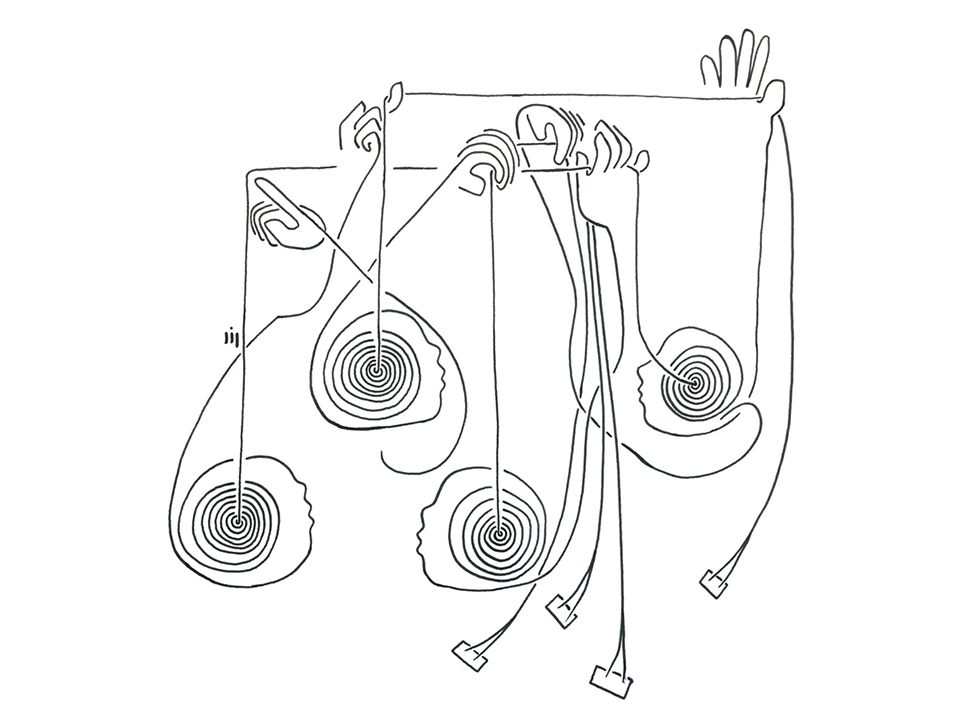Client: Abwab, Dubai Design Week
Location: Dubai, UAE
Year: 2015
Curated by Arini Creative Platforms.
Designed by Rand El Haj Hasan, Rula Yaghmour, Dina Haddadin and Omar Al-Zo’bi.
Engineered by Esam Aljabi and Zaid Alsaudi.
The concept of playing across culture was the theme for the Abwab (doors in Arabic) pavilions during the first edition of Dubai Design Week. For the Jordan pavilion, the four designers immediately knew that design about play had to include playing. The pavilion hosts an interactive experience and the designers used their skills to design a unique moment. The visitor becomes part of the exhibition and transforms it.
The swing evokes memories of the designer’s collective childhood. Yet, it is a universal game that can be recognized and enjoyed by everyone.
Imagination is a fundamental skill during playtime. It is through imagination that any game becomes infinitely magnified. With imagination, one can not just simply “swing” but soar to great heights and defy gravity. The pavilion digs into that outstanding power and its design aims to amplify the gesture of the user to transform the whole space.
White canvases ensure that lightness within the enclosed space is ever-present. Inside, the visitor finds five specially made swings. In contrast with the volatile surroundings, the heavy seats are made of stones from five different locations in the region. Jordanian architectural design is renowned for the use of stone.
With the help of accelerometers and Arduinos, interactive design enables the interaction between the visitor and the space itself. Once the swing is used, the surroundings are activated through visual and audible reactions. Mirrors at the two ends turn the pavilion into an infinite game.
White canvases ensure that lightness within the enclosed space is ever-present. Inside, the visitor finds five specially made swings. In contrast with the volatile surroundings, the heavy seats are made of stones from five different locations in the region. Jordanian architectural design is renowned for the use of stone.
With the help of accelerometers and Arduinos, interactive design enables the interaction between the visitor and the space itself. Once the swing is used, the surroundings are activated through visual and audible reactions. Mirrors at the two ends turn the pavilion into an infinite game.
White canvases ensure that lightness within the enclosed space is ever-present. Inside, the visitor finds five specially made swings. In contrast with the volatile surroundings, the heavy seats are made of stones from five different locations in the region. Jordanian architectural design is renowned for the use of stone.
With the help of accelerometers and Arduinos, interactive design enables the interaction between the visitor and the space itself. Once the swing is used, the surroundings are activated through visual and audible reactions. Mirrors at the two ends turn the pavilion into an infinite game.
White canvases ensure that lightness within the enclosed space is ever-present. Inside, the visitor finds five specially made swings. In contrast with the volatile surroundings, the heavy seats are made of stones from five different locations in the region. Jordanian architectural design is renowned for the use of stone.
With the help of accelerometers and Arduinos, interactive design enables the interaction between the visitor and the space itself. Once the swing is used, the surroundings are activated through visual and audible reactions. Mirrors at the two ends turn the pavilion into an infinite game.





